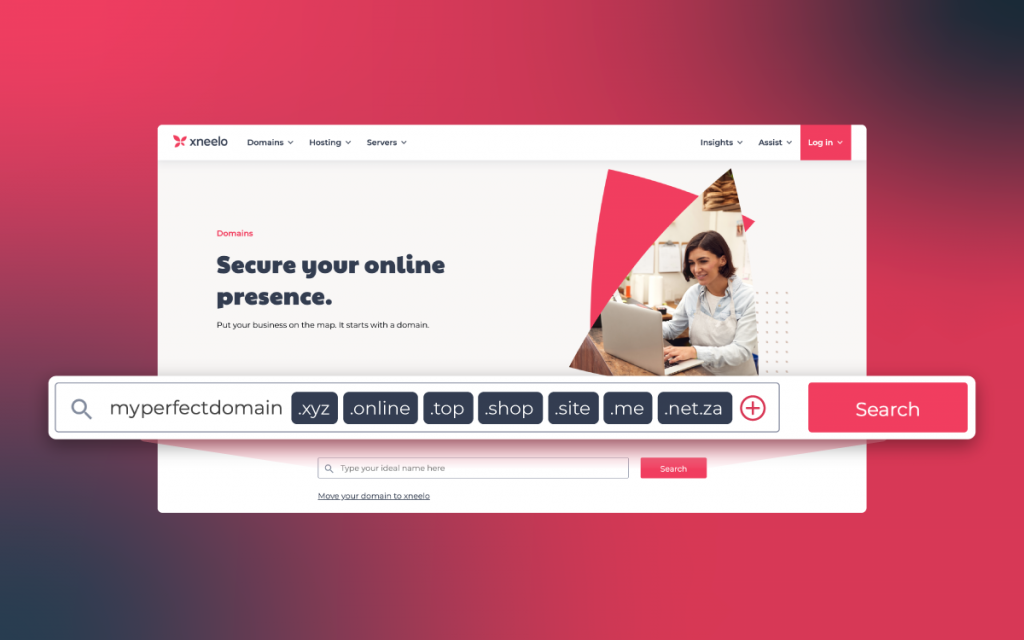You’ve got a product or service to sell, you’ve registered a domain and now it’s time to create your website. One of the first things you would do for a new site is decide what pages you need. In this post we outline the five must-have pages every business website should have.
WordPress is a great choice for business owners as it allows you to create a professional website quickly and easily without any programming experience. Plus, when it comes to your look and feel, you’ll be spoilt for choice with a large selection of WordPress themes for business.
A home page
Research shows that 99% of websites have a 10-second opportunity window – this means visitors decide in 10 seconds whether they want to stay or leave. Your home page is your opportunity to pitch your business offering – your product or service – and hook your customers by telling them what problem your product or service can solve for them.
Good navigation is key to visitors being able to find what they’re looking for, and quickly. As a start, keep all your important information above the fold – this is the section of your site that visitors will see before scrolling down.
Keep your home page design simple. Add one featured image or video to the content above the fold, with a short headline that introduces your business. You can include a subheading or a sentence that describes your business in a bit more detail below that. Don’t forget to add a strong call-to-action – tell visitors what you want them to do.

Additional practical tips that can help create your home page:
- Use clear labels for navigation
It’s best practice to use words that people are familiar with for drop-down menus. - Follow the three-click rule
People should be able to navigate your site with as few clicks as possible. The three-click rule says that visitors to your site should never be more than three clicks away from what they are looking for. - Don’t forget about the footer of your site
Visitors expect to find navigation options and contact information in the footer, so make sure it’s there.
From your home page, your customer should be able to know exactly where to go to find what they need. Don’t make them look too hard!
An about page
This page needs to tell visitors who you are and what your business is about. It’s your space to tell your brand story, share your values, and unpack your vision.
If you’re not sure what to include on your about page, you can start with these important details:
- Your business values are and what makes your company special
- A brief history of your business
- Where you’re located – don’t forget to include what area(s) you service if necessary
- Customer testimonials or reviews to foster trust
- Links to your social media pages
- A newsletter sign up button if you have one
Make sure all information you include is relevant and up to date. And don’t forget to include any awards your company has won – this is external validation that can instill confidence in prospective customers.
Remember to be human, authentic and honest. You want your customers to trust you and believe in what you do and why you do it.
Product or service pages
Your products and/or services pages should provide information about what your business offers. This page should be easy for visitors to scan and navigate quickly. If you have a large catalogue, create a separate page for each product or service, as too much information can be overwhelming.
Some key elements to include:
- A detailed description of each product or service
- A breakdown of features
- Any important benefits and problems you’re solving for your customers
- High-quality images and/or videos
- The price of each product or service and whether or not VAT is included
- Customer reviews
- A call-to-action button to help customers place their order
A contact page
Customers need to be able to get in touch with you – so include your contact number and email address. It’s also useful to add Google Maps if you have a physical address that’s open to the public to help customers find you. Integrating Google My Business is another great idea.
You want to make it as easy as possible for customers to get in touch with you. Contact forms can help automate the process. Keep your forms simple and only ask for important details. If you only need contact information, for example, don’t ask for a physical address too. Tell people exactly what information you need, why you need it, and how you plan to use their information. There are important legal considerations to keep in mind when requesting customer data.
You can also consider using a chatbot if you’d like to further automate the contact page and create an effortless experience for customers. Tidio is a popular WordPress live chat plugin that comes with a customisable widget and free mobile apps for Android and iOS.
Your contact page should make it as easy as possible for customers to get in touch with you. If you’re worried about spam, your Managed WordPress Hosting plan has built-in spam filters in place to ensure you don’t get hounded by junk mail.
A blog or news page
The blog or news page is often underrated but plays an important role in the success of your website. For a start, it’s a great Search Engine Optimisation (SEO) tool, which is important if you’d like your website to reach more potential customers.
Whenever you publish or update content, Google receives a signal that says your site is active. In addition, writing blog content means you can target keywords that you can’t include on your landing pages.
Beyond SEO, though, a blog page can:
- Offer you additional content that you can easily repurpose for social media
- Help convert traffic into leads with well-placed Call To Actions (CTAs)
- Establish you as an authority in your area of expertise. To do this, though, you must make sure the content you publish is both accurate and useful for your readers
Now that you know what website pages to include to optimise your user experience, consider using one of our Managed WordPress Hosting Starter Sites to build your website.
Creating a business website doesn’t need to be difficult, nor do you need to hire expert help. Take the time to research the best practices, look at what your competitors are doing, and most importantly, use the tools available to make your life simple.
Take a closer look at our new e-commerce Starter Site for WordPress.










